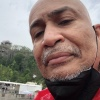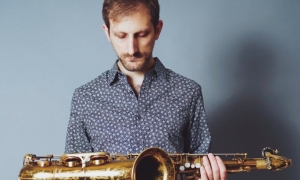Home » Jazz Articles » Interview » Michael Marcus: Truth, Love and Soul
Michael Marcus: Truth, Love and Soul
Jazz is about originality and respecting the tradition while one moves forward.
 Philadelphia performance artist "Skip" Homer Jackson recently asked my opinion about a number of jazz artists who have been overlooked because they were great stylists who played in the shadows of great players. I immediately thought of Booker Ervin in relationship to John Coltrane; and Booker Little, who ironically was little (no pun intended) appreciated during the 1960's era of stellar jazz hornmen. In the back of my mind too, was the multi-instrumentalist/band leader and composer Michael Marcus.
Philadelphia performance artist "Skip" Homer Jackson recently asked my opinion about a number of jazz artists who have been overlooked because they were great stylists who played in the shadows of great players. I immediately thought of Booker Ervin in relationship to John Coltrane; and Booker Little, who ironically was little (no pun intended) appreciated during the 1960's era of stellar jazz hornmen. In the back of my mind too, was the multi-instrumentalist/band leader and composer Michael Marcus. The following interview should, in a colorful and informative fashion, fill in the blanks for those who may casually know of him. It is no accident that Marcus is much like many of the cats with whom he has had long associations (the late saxophonist Frank Lowe, trumpeter Ted Daniel and Sonny Simmons).
A natural storyteller both on and off his horn, and a genuinely warm human being, Marcus just so happens to have recorded two of the seminal recordings of modern American music: 1997's This Happening (Justin Time, 1997), a beyond category duet with the late Jaki Byard and Involution (Justin Time, 1998), an essential disc with a quartet also featuring Byard. Marcus has all the qualities of great artistry that combine mastering one's craft with restless and probing imagination.
Chapter Index
- Beginnings
- Studies
- Jazz and Joining the Avant-Garde
- Sonny Simmons
- Under the Wire
- Focusing on Bb Clarinet
- Surviving Day-To-Day
- Frank Lowe
- Friendship
- Neglected Recordings
- Jaki Byard
- The Future
- Studies
All About Jazz: You are a Baby Boomer. Where and when were you born?
Michael Marcus: I was born in San Francisco, California on August 25th, 1952. At that time, in San Francisco, when I was an infant and not aware of these realities, Gerry Mulligan and Chet Baker were playing in North Beach and Bop City was thriving with Pony Poindexter, Teddy Edwards, Dexter Gordon and John Handy jamming and performing...where Bird and Miles played regularly in a city that had so much music going on. I grew up being part of the "Summer of Love" experience. I was so lucky to witness and hear Jimi Hendrix, Albert King, Thelonious Monk and the Paul Butterfield Blues band (with Mike Bloomfield), The Fourth Way, Rahsaan Roland Kirk, Janis [Joplin], the Soft Machine, and many, many other incredible groups all being presented by Bill Graham.
AAJ: What is the origin of your own musical beginnings?
MM: I got into jazz music originally by first being immersed in blues. When we were in high school, during the peak of the San Francisco rock era, we were also exposed to many great blues artists as well. There were so many influences that started to absorb my time, particularly the Chess artists, i.e. Howlin' Wolf, Willie Dixon, Muddy Waters, Little Walter, Memphis Slim and the great Sonny Boy Williamson, who influenced me to pick up the harmonica. The harp was my first musical instrument of expression that would eventually lead the way to the woodwind family. I loved Charles Musselwhite. He did a beautiful rendition of "Christo Redento."
My friend, Doug Herald who was a true genius, was the hip boogie woogie pianist (and guitarist as well) in our neighborhood. Doug was a true natural who lived the life of a jazz/blues musician at an early age. He was really into Pete Johnson, Albert Ammons, Guitar Slim and Fats Domino. He played that style brilliantly in his own way and invited everyone to jam with him at his house. He had a lot of soul in his playing and so he really was an inspiration for me to pursue this music. Doug influenced all the upcoming artists in the Daly City hood. Johnnie Bamont was the hip saxophonist that jammed with us at that time.
There were incredible black record stores in the Fillmore district of San Francisco that carried a lot of the rare titles that most other record shops did not have. We frequented those shops regularly during those years, which helped me develop a broad knowledge of the labels and recordings that were special to my ear. After awhile, I discovered with friends, Lester Young, Johnny Hodges, King Curtis, Eddie Harris, Sonny "Red" Kyner, Red Garland, Count Basie, Dexter Gordon, Jug, and then Bird [Charlie Parker], Art Pepper, tuba giant-Ray Draper, Yusef Lateef, K.D., Art Blakey, Hank Mobley, Sonny Clark, Gil Melle, Teddy Edwards, Monk, Sonny Criss, Wynton Kelly, Newk, Miles, Eric Kloss and some avant-garde artists at the same time—as well as Eric Dolphy, Bill Dixon, Ken McIntyre, Cecil Taylor, Henry Grimes Trio (with Perry Robinson), and my friend Sonny Simmons (The Cry with Prince Lasha). These recordings were my "school," if you will, that started me to understand the art of jazz improvisation and the relationship jazz has with the blues as its foundation.
This experience also led me to drop the harmonica and move on to the alto saxophone. Trane and Lacy came later.
AAJ: Please track the evolution of your playing the alto saxophone, then baritone, ultimately leading to being on the blues circuit.
MM: After hearing and thus inspired by the singing and crying tone of Bird, Sonny Stitt and Art Pepper, I had to try and capture their essence by having an alto saxophone. I got a Conn with a "Lady on the Bell," like the one Bird used. When I heard Art Pepper play a ballad like "You Go To My Head," tears arrived.
After developing a good tone, learning blues changes, I knew becoming a woodwind player was something I needed to pursue.
At that same time, I was exposed to Leo Parker, Serge Chaloff and Pepper Adams. In Serge I heard how beautifully he incorporated harmonic passages in the Bird tradition in his phrasing, and so I immediately became attracted to the baritone.
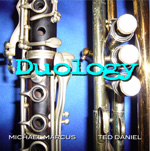
I also started to realize how many great alto players existed in the Bay Area (Bishop Norman Williams, John Handy, Dave Smith, Dave Sherwood, Noel Jewkes, and so many more) and so knowing I needed to make a living being a musician, I realized that by becoming known as a baritone saxophonist, I might get more opportunities to get some gigs. There are never enough baritone players. I knew how to play blues well, so I naturally started getting gigs in Oakland with a lot of brilliant musicians who were always looking for a good baritone player to have in their horn section.
I started getting hired and recording with: Hi Tide Harris, JJ Malone, Troyce Keys, Charles Brown, Big Joe Turner, Luther Tucker and my friend Sonny Rhodes. Sonny Rhodes was the first person to take me on the road. I cut a classic recording with Sonny Rhodes in his living room in East Oakland, called "Won't Rain in California" (there was a drought at that time in California '75-76.) One of the trumpet players on the date was John Hunt, from the Ray Charles band. Oakland was such (and still is) an important center for this music.
One night I was working with Sonny Rhodes [1977] in San Francisco. We were opening the show for Albert King. Mr. King was based out of St. Louis, MO. The trumpet player in his band, Harold "Pudgy" Attyberry, came up to me and during the break said, "Albert likes your playing...he's looking for a baritone player for the horn section...you should go talk with him." Well, I did. I was nervous. Albert had an incredible presence.
The next night I was leaving San Francisco, going on the road with the greatest electric blues guitarist in the world, Albert King. My first national tour on a Greyhound bus. I was so honored. Very few, if any, white baritone sax players were accepted in those circles that I was blessed to become part of. I learned and matured so much. The experiences with that two year tour were incredible, but if I get into them now, this interview would be a book. A year later, I was part of a tour in Japan billed as Battle of the Blues Guitars—B.B. King vs. Albert King.
Subsequently, by being in Albert's band, I got the gig with Bobby "Blue" Bland in 1979. In his band I got to play with Mel Brown, Wayne Bennett, Morris Atchinson, and Joe Hardin. Bobby was based out of Memphis, Tennessee. The horn arrangements in Bobby's band were advanced, sophisticated and beautiful. Many were by Joe Scott, who was from Texas. We also toured in a Greyhound bus like the Albert King band, but the difference was, Bobby had a bus driver and Albert drove the bus himself. That gig lasted about two years as well. I was continuing my studies in bebop and improvisation on the road in the daytime in many hotel rooms.
AAJ: I imagine while you were on the blues circuit the money must have been pretty cool?
MM: Yeah, the money was cool and regular, but not great. The band leader made the good bread. But the good thing was, by the end of the week, you knew you would be secure and you were performing and playing your horn five to six nights a week. During my four-to-five year stint on the Chitlin' circuit, the bands probably worked forty weeks out of the year. Once we played on the Kool Jazz Festival in several cities. Albert King had us wear jean coveralls during that tour, like the way Art Blakey had his band members dress. There was always a band uniform in those bands.
We also played at Elvis Presley's memorial service in Memphis with four gospel singers from Gary, Indiana as an addition to the horn section. They were called The Roses. They were incredible.
class="f-right">
AAJ: What books were you using to study bebop while you did the blues circuit? Did you have a chance to hit with any of the cats in other cities while on tour?
MM: I really did not study out of books while on the road, well...I take that back. I had a copy of Eddie Harris' book, which had wonderful syncopated rhythmic exercises. He was a brilliant and original improviser/saxophonist/composer.
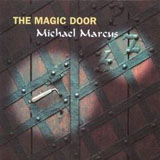
I really learned the language of bebop by studying the recordings. Lots of Blue Notes and Prestiges. Bird phrasing. Also learned by being around heavy musicians who were seasoned in the modern jazz idiom. The osmosis in practicing together! Jerry Wilson, Mel Brown, Joe Hardin, Pudgy Attyberry, Oliver Johnson and Morris Atchinson are the names of some the great artists I hung out with that the world should know about.
Morris was so inspiring to be around! He was (and still is) a giant on the tenor saxophone...tone-blues, feel-soul and a gigantic knowledge in the cycles and modernistic harmonic passages that Coltrane left us with. He could play "Giant Steps" inverted with a tone like King Curtis or Jug. Yes, he's a legend.
Oliver, Joe and Pudgy—all great trumpet players. We practiced lots of bop classics together, always in the dressing rooms and hotel rooms. Then there was the late genius Jerry Wilson. I met him on the South Side of Chicago when we performed at the Burning Sphere. He lived right near the Roberts Hotel at 63rd & King Drive. Jerry took a liking to me and let me live with him for a month during that period. He could play like Johnny Griffin and had also had an incredible tone, but was original like Morris. During that time when we were hanging out, Jerry cut a 45 rpm single called "Sax Freak," which has become a cult recording. We got up every morning, early, and went to the park and practiced all day. He took me once a week to Von Freeman's jam session, which was near his house. I was sitting in with the big boys!
AAJ: Why do you avoid labeling yourself a composer?
MM: I am a composer! 98% of my recordings consist of my original compositions. I have composed for strings and written a string quartet suite. I also have done numerous arrangements for my ensembles and others. I feel that my compositions are important statements in my discography. I hope that some listeners and musicians as well, will find some beauty within their structures. I would love to hear someone else's interpretation of one of my tunes. I continue to compose regularly and work at the evolutionary process that is so addicting.
class="f-right">
Jazz and Joining the Avant-Garde
AAJ: Why did you stop performing on the blues circuit and slowly immerse yourself in the jazz avant-garde?
MM: Music is a wondrous experience. The highest thing I know is the art of improvisation. It is a natural progression in any artist's growth to emerge into a musical reality where he or she can feel like they have found a place to completely express themselves. Though performing in the blues circuit was a steady income, it was time to move on. All jazz music is really part of the avant-garde. I am interested in creating, composing and performing music that's beautiful or good music—not necessarily to be put in categories of music. Though, playing free jazz is a joy because all your roots and all of your knowledge of music is available for the sound palette that you can dance with in soul.
So, I keep practicing everyday, try to improve, capture the masters' messages and incorporate the information in my "worldscape." After all, jazz is a language in art that thrives from originality and being undeniable. I remember Charles Moffett wrote a tune that has a title I really love and relate to on his 1969 Savoy Recording The Gift—"The Avant-Garde Got Soul, Too."
AAJ: Where and when did your jazz career begin?
MM: That's a hard question to answer, however, I guess everyone's career begins when satisfaction with one's self is cool, getting recognition from peers, and actual professional compensation occurs.
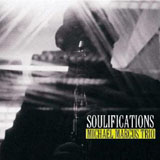
Having said that, my real first major event in my jazz career probably started when I was hired to help arrange and play on Sonny Simmons' recording Backwoods Suite. (WestWind, 1982). It was produced by Craig Morton (who thirteen years later produced the Saxemble recording on Qwest that I'm part of). Billy Higgins was the drummer on that date. Sonny, at that time and now as well, was such an inspiration to be around. We learned so much about the jazz life along with music from him.
Pianist Cecil Wells hired me for some hip gigs at that time, too. He sounds a lot like Wynton Kelly, but has his own sound and writes beautiful, memorable tunes.
Several months later, in late '82, I moved to the Big Apple to continue this journey.
class="f-right">
AAJ: Let's backtrack and deal with a central figure in your musical life, Sonny Simmons. How did you meet?
MM: Around '79-'80, when I was back in the Bay Area from the road, I got a call from Hi Tide Harris. He hired me to play baritone sax on this recording he was doing for Japanese RCA. He mentioned on the phone that at the session there will be an alto player that sounds like Bird. I immediately thought of the Bishop Norman Williams, but Hi Tide said, "No, it's Sonny Simmons!" I said, Wow. I had already loved Sonny's recordings from the ESP label and The Cry (1962) on Contemporary Records. I knew and heard his connection with Bird and Ornette so I was excited and honored to meet him.
When I arrived at the session, Sonny was already there warming up and I heard that true-tone. He was wearing a bright, pin-striped sport coat. So, we did two tracks together and blended well. We both soloed on a blues with Bird-type changes. Also on that date was Eddie Henderson, Cecil Wells, David Berger and Emil Ram. Berger was a great harmonica player who could play chromatically on a blues harp.
Sonny became aware of my enthusiasm to learn and practice, so we developed a musical relationship. We hung out from the streets of San Francisco. He really helped me in the art of phrasing. He also found out about my arranging abilities and thus the alto-baritone sound became part of many of his performances at that time. Sonny liked the way I could hear and notate his difficult heads. We practiced for hours on many grey San Francisco days. The sessions were always invigorating, productive and spiritual experiences. Incidentally, during that period as well, I was practicing with another Bay Area legend, bebop master tenor saxophonist Vince Wallace.
I moved to the east coast in late August of '82. Sonny and I only performed a couple of times together in the '80's when Sonny came east. We reunited when I was back home in San Francisco in '94 for some gigs. Now I was playing straight alto and Saxello, Bb clarinet and bass clarinet in his ensembles, as well as in my own.
class="f-right">
AAJ: Your debut recording Under The Wire (Enja, 1992) reflects so many elements of the blues from the cry in your tonality to the tunes on the disc. Was that a deliberate homage on your part?
MM: I decided that for my first recording, I would hire musicians that I already had a personal/musical relationship with or at least that I had performed with previous to the recording. This is the case for all the musicians on Under The Wire. All of them have a great understanding and experience in avant-garde jazz or free jazz, if you will, rooted in the tradition. These are the elements I believe you are hearing within the recording with all the participants interpreting my original compositions. As a soloist and composer, I am always trying to convey the message of the blues feel within my sound story.
I met Joe Bowie in '77 in Oakland, California at a gig. He was in a horn section with Luther Thomas, working with Tyrone Davis, the Rhythm & Blues vocal great from Chicago. At that time, I was touring with Albert King. We became good friends and still are in contact with each other. Ted Daniel had hired me in the '80s to be in his band, Energy. He's a great trumpet player and so there was my front line when it was time. William Parker and Reggie Nicholson were my first choices for the rhythm section. They made a swinging, soulful rhythm team.
AAJ: Give us a sense of what New York City was like musically in '82 when you moved here?
MM: Fortunately, when I arrived, my friend tenor saxophonist Bob Feldman had an extra room in his large midtown apartment that was vacant and available to me. It was across the street from the Manhattan Plaza where many great musicians live. Ironically, my buddy trombonist Joe Bowie lived there. Joe is such a beautiful human being. He introduced me to Frank Lowe who then introduced me to Ted Daniel. I quickly developed a friendship with both of these great artists. Frank Lowe. I miss him deeply. I also met and talked with legendary saxophonist Harold Ashby. Ashby appreciated and could relate to my connection with the bands I toured with.

The very first time when I first set foot in NYC, I walked out of the Port Authority and there was George Braith playing on the streets with Tommy Turrentine and Cindy Blackman. Braith was a major influence on me during that period to seek out the special sounds of the horns he and Rahsaan played on. George made three classic Blue Note recordings that still sound fresh today. Playing on the street really helps in developing a strong tone. I started going to Barry Harris' workshops and started meeting lots of musicians there, as well. Barry is a national treasure and everyone can learn from the maestro.
I was lucky because during the early '80s, Dexter Gordon, Jackie McLean, Mal Waldron, Pepper Adams, Woody Shaw, Steve Lacy, Ray Draper, Harold Vick, C Sharpe, John Jenkins, J. R. Montrose, Al Haig, Chet Baker, Don Cherry, Johnny Coles, Hank Mobley, James Clay, Walter Bishop, and Art Taylor were some of the legends that I got to hear and meet. All of these giants are no longer with us. John Jenkins came to my apartment and practiced with me. He wrote out hip bop cycles on tunes that I still have. He was a sweetheart and really knew Bird's message better than most.
Life is so incredible. It's like a beautiful painting or movie soundtrack that you can become part of. I always say, "It's not where you are at, the city or country, it's what's happening in your life at that time." In '85 I started rehearsing with Ken McIntyre's band...Makanda.
AAJ: Ken McIntyre is such an unappreciated figure in the music. Did you both share a kinship by virtue of being multi-instrumentalists? What kinds of things did you learn from him?
MM: Makanda was quite an interesting and intelligent human being. I know Makanda Ken McIntyre touched a lot of people in a positive way during his life. He was extremely articulate when he spoke about music and life. I personally related to many of his profound opinions when it came to the music, though a lot of it was through an "academia" point of view. This is not negative or positive, just the truth. He said when he came up learning the music, he used to whistle all of Bird's solos by memory to learn the structures and formulas in the language of bebop.
I agree that he was underappreciated in the jazz world. He was a fine composer, arranger, multi-instrumentalist who produced some beautiful recordings in his life. He had a great tone on flute and the double reeds. Remember Looking Ahead with Dolphy on Prestige Records (1960) and also his brilliant recording on United Artists Way Way Out (1963)? I remember how influential this recording was because it had a full string section along with Makanda, bass (Bob Cunningham) and drums (Edgar Bateman). This concept had never really been done before this recording, where the strings are playing more rhythmic phrases in a more avant-garde setting. Bird with strings, of course, set the standard in modern jazz recordings with strings and I am sure Makanda was influenced by that seminal recording.
Way Way Out still stands the test of time and sounds fresh today. It definitely had an influence on my approach to string writing. Ironically, I also had the good fortune to perform with both Bob and Edgar, though in separate groups.
He was very insistent with musicians that they should strive for individuality. His music had an undeniable dance to it and this is something that I try to convey within my music. He really taught me how to understand complex and unorthodox rhythms. This helped me when I started to write for strings and also when I wrote sophisticated bass lines for my ensembles.
I worked with Makanda's ten-piece ensemble for over a year in the late '80s, every Tuesday, at a club in the Lower East Side. Charles Persip played drums many times with that group on several of the gigs. I believe the club was called First on First.
One of the most important things I think Makanda shared with me was when he said that "many musicians are never really matched to their instruments during their life in music." Wow, he was right. Within my excursions in exploring the woodwind family (Makanda literally played every member of the woodwind family), I have now found that in the Bb clarinet, I can express my ideas with a voice that I truly enjoy, with a more effortless reality as opposed to some of the other woodwinds. This is not that I still don't love the other members of the woodwind family that I have recorded and performed with over the years. I remember this is a similar type of occurrence that happened with John Carter.
Any musician who commits his life to this music, deserves a treasure or a vacation in Shangri-La.
class="f-right">
AAJ: For you to now focus exclusively on the Bb clarinet is such a major decision, especially in light of you having established yourself as a multi-instrumentalist. Please explain what brought this about? MM: I have been playing the Bb clarinet for several years and always have wanted to explore its endless possibilities. By osmosis in practice, lately, I made a concerted effort to do this. I have just released in the past six months two recordings that feature myself exclusively on the Bb clarinet—The Magic Door (Not Two, 2007) and Duology (Boxholder, 2007), a duet with Ted Daniel. I have not quit the other woodwinds, just put them aside to focus on an extremely difficult instrument. The joy I have been experiencing doing this is immense. I find it easier now to fulfill some of my thoughts with the clarinet, through musical articulations during improvisation, than I ever did with the members of the saxophone family. I am also finding new ways to compose tunes using this hip horn. Remember, the Bb clarinet has been in the frontline of jazz since the beginning of this special music's inception, so I am proud to try and carry on that tradition. Tone and sound...what a wonderful experience to be part of! AAJ: You worked with the legendary Denis Charles on at least two recorded occasions; your debut Under The Wire (Enja, 1992) and Here At!(Soul Note, 1994) and what is one of his last dates Ithem (Ayler Records, 2004). Give us some insights into this very troubled but creative man both on a musical and personal level. MM: Actually, Reggie Nicholson is the drummer on Under the Wire and Denis is the drummer on Here At! and Ithem. Both these recordings were done within six months of each other in '93. Denis was one of the innovators to come into the new music or avant-garde in the middle '50s when he joined Cecil Taylor's band, and moving along to record with Steve Lacy on a classic Prestige recording called Soprano Sax (1957). Denis, Wynton Kelly and Beull Nieidlinger—what a swingin' rhythm section that Lacy put together! AAJ: Looking at your career since you left the blues circuit—none of your recordings or gigs have been particularly high profile (although you have had lavish critical acclaim). Thus I wondered how have you been able to survive in artistic and day-to-day terms? MM: Well, that's an interesting question. Thank you. I like taking chances and love the challenge of being an artist in modern times. When you are an artist like myself that does not compromise in his music or art, you are always struggling to get some recognition and a little dignity, plus of course, making a living. You sacrifice a lot to be part of, in my mind, the highest art form on the planet. Remember that jazz is about originality and respecting the tradition while one moves forward. All a man can do is try and keep practicing (which I do every day). Having respect and camaraderie from your peers is also extremely important. The other day I ran into Rahn Burton, who made the two organ recordings with me almost ten years ago for Justin Time Records. He commented about how he thought that they were important recordings and that he was grateful to be part of them. I appreciated that. AAJ: Frank Lowe figures in your important collaborations chiefly because of the arranging you did for his saxophone group. Please tell us about meeting and working with Frank. MM: Frank Lowe was a beautiful musician and person. He who had a tone to die for on tenor saxophone. When you heard just one note from Lowe, you knew it was Lowe...an original voice and composer in the modern avant-garde scene of the late twentieth century. Frank knew how to breathe correctly when he played saxophone, which enabled him to get that soulful, unique and undeniable tone. Lowe grew up in Memphis and heard all the soul (Stax Records) one could digest while in his formative years. Whenever anyone met Frank, they knew that they were in the presence of a hip, sweet cat. . Frank always gave me positive encouragement to pursue my dream on becoming exclusively a clarinetist. We both agreed and became enthusiastic when we would listen to Alvin Batiste's tone, which we would say "draws you in like the way Tina Brooks or Coltrane did." This agreement happened innumerable times with hundreds of great jazz artists. Lowe was a walking book. Incidentally, at 5:00 AM this morning, my friend in Mississippi, drummer Alvin Fielder called me to tell me the sad news about Mr. Batiste's passing. AAJ: How did you become involved with Frank Lowe and The Saxemple? There are at least two recordings Inappropriate Choices (ITM, 1991) and Saxemble (on Quincy Jones' label Qwest/Warner, from 1996) that feature both your playing and arranging. MM: Around '90, Lowe decided to put together a saxophone group with drums. This was Lowe's idea as an answer to the WSQ [World Saxophone Quartet], since their saxophone group did not have drums at the time. He told me about a young phenomenon on the tenor sax that had just came to town, who was playing with Lester Bowie's organ group downtown—James Carter. He asked James if he would participate in a recording session and James agreed. I believe JC was around nineteen or twenty at the time. Since I had arranging abilities and Frank knew that I had an important voice that was essential to making the Saxemble different from the WSQ, playing the bass saxophone, he asked me to join the band as well. AAJ: Saxophonist Fred Hess once told me that after playing with the young James Carter in Ron Miles band, he had to go back to extensive wood-shedding. It seems the young Carter's playing made Hess re-evaluate certain aspects of his playing. MM: Yeah, James is a magnificent multi-instrumentalist and a lovely person as well. I have had the pleasure to practice over the years, multiple times with James in my apartment. James is an extremely generous artist and humanitarian, too. He has huge ears and his dexterity is amazing on all the woodwinds. Once, I was playing piano at a jam at my house, and James picked up an old Haynes wood piccolo that I had and started playing "Giant Steps" at a fast tempo, completely moving through the changes like butter. After that he picked up a bass saxophone and played a slow blues before we all went berserk.
Focusing on Bb Clarinet
Maybe like the late, great clarinetist John Carter, I will commit to the Bb clarinet as my singular main instrument of expression and not return to the rest of the woodwinds that I have explored in my career. Changes, especially radical changes, are healthy in one's life and anyway, there is always room for more clarinetists in the world of jazz. I always loved Pee Wee Russell during my formative years and was wowed when I heard him with Monk. I think he was a pioneer and one of the original avant-garde artists of the twentieth century. Also Jimmy Hamilton, Tony Scott and Johnny Dodds. (Incidentally, Dodds may well be one of the greatest blues players that ever lived). So, what's not to love about the instrument, when artists like the ones I just mentioned laid down a path for guys like me to build upon?
I met Denis around '83, doing some street gigs and at that same time I hooked up with Roy Campbell, Zane Massey, Alex Lodico, Bob Arkin and Antoine Roney and also Haze Greenfield, pianist Denton Darien, Tom Bruno and trumpeter Gary Strauss. Gary has a beautiful tone like Chet Baker's. As soon as I first played with Denis, I not only heard that undeniable swing (you could hear strong Blakey and Max [Roach] influences immediately), but also that I was interacting with one of the most spiritual and decent human beings that I ever met. My relationship with Denis lasted until his untimely death. Denis was like a healer. He could make anyone feel comfortable, any age, race, gender, economic status, and with that spiritual quality, he transformed it in the music every time he played. His ears were enormous, so when you rehearsed any original, he heard it instantly, adding his exceptional grooving rhythms. Besides all of that, he was hip, not square. His tone on his ride cymbal, was what any drummer would aspire to acquire—hey, a poem [laughs].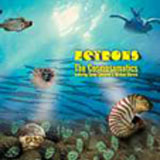
We did the Ottawa Jazz Festival together with Bob Cunningham on bass, and many other gigs over the years in different settings. Denis and William Parker! Wow. I remember Denis telling me that William was his favorite bassist during that period. I loved performing and recording with them both. We did the What is Jazz Festival in '93. Part of that gig is on the Ithem recording on Ayler Records. I also had a hip trio with Denis and Tyler Mitchell for some gigs. Fred Hopkins, also a master bassist and giant of the music, was the bassist that I hired for the Here At! recording session on Soul Note. It was the only time that Denis and Fred recorded together. What a rhythm section. On one tune, William Parker is added so you get to experience Fred and William exchanging in a beautiful bowed bass duet.
The only type of trouble Denis encountered in his life, in my opinion, was the system. An artist's personal life is their personal business. This type of musician is rare and so the planet was graced with Denis Charles' presence. He was a giant in the music, who contributed immensely to the art of jazz. I am so delighted that Denis was part of my early discography and performances. Hey, I can say I recorded with Denis Charles!
class="f-right">
Surviving Day-To-Day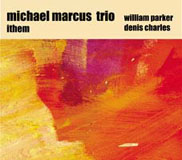 Many people listen to music with their eyes. There are, of course, many critics and promoters that can decide one's movement in their career, especially if an artist is involved in playing politics, which I never have been. Having said all of that, the survival process of being a Jazz musician in modern times has not been easy. In fact, I almost live month-to-month. Some great months and some not so good, but it has definitely been worth it. Look who I got to perform and record with over the years, with many more to go. How many people or even musicians can say that? I'm very grateful. Fortunately, I have very cheap rent in NYC. There were many grey days where Frank Lowe and I had to walk to the Jazz Record Center to sell our CDs to get dinner money or for the phone bill. Blue Reality! I miss Lowe!
Many people listen to music with their eyes. There are, of course, many critics and promoters that can decide one's movement in their career, especially if an artist is involved in playing politics, which I never have been. Having said all of that, the survival process of being a Jazz musician in modern times has not been easy. In fact, I almost live month-to-month. Some great months and some not so good, but it has definitely been worth it. Look who I got to perform and record with over the years, with many more to go. How many people or even musicians can say that? I'm very grateful. Fortunately, I have very cheap rent in NYC. There were many grey days where Frank Lowe and I had to walk to the Jazz Record Center to sell our CDs to get dinner money or for the phone bill. Blue Reality! I miss Lowe!
The booking agents that I am involved with that book my tours in Europe, where incidentally most of my work is, currently are having difficulties because of the tumultuous economic situation in Europe, so this puts a daily strain on us as well. I am not the only musician, as you know, who experiences these similar problems. I'm sure I could list several brilliant recording artists, who like myself, have had esteemed recording discographies and a lot of prestigious gigs, but never a magnified profile in the scene. But, one always finds a way to survive—gigs, ASCAP, record dates, teaching, workshops, and then maybe some love.
I think, though, I have had some pretty high profile gigs and recordings. To name a few, (go to my new website to see the rest: www.michaelmarcusjazz.com) I have performed at the Blue Note club in NYC with my group six times. I have performed at The Modern Museum of Art in NYC twice, toured all the major festivals in Canada (Montreal, Toronto, Vancouver, etc.) with Jaki Byard. Performed at the London Jazz Festival, which was aired live on BBC, performed on several festivals with The Cosmosamatics all over the world (Tampere Festival, Banlieues Bleues Festival) and many festivals with my trio. The Cosmosamatics are regularly played on national TV on BETjazz and, as you stated, all my recordings have been on recognized labels with reviews in all the major publications.
As a matter of fact, yesterday I looked at some radio station websites. In the Chicago area I noticed that my new recording The Magic Door is number one on their airplay list and number two on the airplay list on Montreal's main jazz radio station. Duology also has been riding high on some of the college stations as well. From more of this type of recognition from DJs around the country playing my music, ASCAP can continue to do its job by issuing their checks to me in a more regular way. The artists in jazz need this addition to their income since, as everyone knows, record sales royalties from their prospective record company have diminished for jazz musicians because of slow record sales.
Remember—only artists that are on major labels, that get tour support, are selling large numbers of CDs, respectfully. The larger record companies are advertising their product internationally in multiple publications, which the small independent labels cannot do. My recordings have never sold in large numbers (who really has in my world of peers?) except Reachin' (Justin Time, 1996), which has chordal acquisitionist Bruce Edwards on guitar. But respectfully, I keep getting interest from producers to have my discography stay alive by being recorded on what I think are some of the more important independent labels out there. I have been fortunate because I have always got paid as a leader or sideman for my record dates and never had to produce a recording with my own monies. This is not a negative or positive, it's just economics for me.
Maybe some promoters or critics will investigate some of my new projects, and thus from that, we can get some more gigs...hey, that would be nice. So one does the best he can and hopes his music will spread a little joy and seep through the cracks where beauty rests.
class="f-right"> 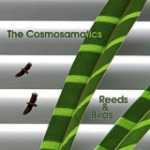 I met Lowe in NYC a couple of months before I started playing in Ted Daniel's band Energy in early '83. Lowe and I quickly developed a friendship that lasted until his passing. We had a lot in common, particularly our mutual understanding and awareness of the essence of jazz along with being woodwindists, and also our extreme knowledge of modern jazz recordings. We talked nearly everyday during our twenty years of camaraderie in Midtown Manhattan, and spent hours practicing, listening to music, exchanging ideas and living jazz. Frank was so encouraging to so many musicians that he met during his life, old or young, and always showed them respect when deserved.
I met Lowe in NYC a couple of months before I started playing in Ted Daniel's band Energy in early '83. Lowe and I quickly developed a friendship that lasted until his passing. We had a lot in common, particularly our mutual understanding and awareness of the essence of jazz along with being woodwindists, and also our extreme knowledge of modern jazz recordings. We talked nearly everyday during our twenty years of camaraderie in Midtown Manhattan, and spent hours practicing, listening to music, exchanging ideas and living jazz. Frank was so encouraging to so many musicians that he met during his life, old or young, and always showed them respect when deserved.
Lowe loved that I could understand, hear, and read his completely original way of notating and playing music. Lowe was one-of-a-kind. I remember one time he took me down to the Lower East Side in the early '80s and introduced me to Don Cherry, Ed Blackwell and "Jazz" (Denis Charles) while they were all conversing on a corner. The next night I heard C Sharpe at the University of the Streets and was blown away (C Sharpe was part of the 1956 Lee Morgan recording on Blue Note Indeed). C Sharpe had the phraseology of Bird, but in his own way and he was very inspirational. Spiritual cat—a man of the times, like Lowe. During that era I also met and became friends with the late, great and under-appreciated Jimmy Vass. Lowe and I walked the streets many-a-day. There was always a story and real life drama with Frank.
Now all he needed was a fourth voice and a drummer. Lowe and I came up with Carlos Ward for the fourth horn and for the drum chair, well, Phillip Wilson was in Lester Bowie's group at that same time as JC, so Lowe asked him to do the recording, too. Frank had performed in Phillip's band a few years back in the '70s and so they already had a hip friendship. Phillip was a brilliant, sensitive drummer. He played the new music, having heavy roots in jazz and rhythm & blues and really had an advanced ear. I remember seeing him in San Francisco when he was touring with the Paul Butterfield Blues band, which had little David Sanborn in the horn section—1968.
The chemistry was great with this band and we rehearsed at my apartment several times. Frank Lowe and The Saxemple was born. After a few years going by and a few gigs, a friend of Frank and mine, Craig Morton, who at the time was producing recordings for Quincy Jones' label Qwest, got us signed to Warner Bros. It was decided though, amongst the group and mutually, that it would not be a group under Lowe's name anymore and now it would be a co-op group where we were all equals in regard to the music, like the WSQ or ROVA. The Saxemble. We got Cindy Blackman for the recording since Phillip was tragically killed a few years before the date for Qwest. I made more money on that Warner recording than any other recording in my career to this date.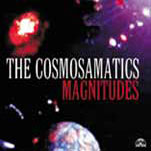 I remember Lowe and I wanted to do a show with the WSQ and bill it as THE WSQ vs. The Saxemble. We wanted the gig to be a classic Battle of the Bands concert, maybe at Town Hall, NYC. We asked Blueitt, and he liked the idea, but it never materialized into a reality. Frank Lowe will always get credit for coming up with that original name for the Saxemble (the spelling changed for the second recording). I believe the Saxemble was one of the best saxophone bands ever, though it was short lived. Listen.
I remember Lowe and I wanted to do a show with the WSQ and bill it as THE WSQ vs. The Saxemble. We wanted the gig to be a classic Battle of the Bands concert, maybe at Town Hall, NYC. We asked Blueitt, and he liked the idea, but it never materialized into a reality. Frank Lowe will always get credit for coming up with that original name for the Saxemble (the spelling changed for the second recording). I believe the Saxemble was one of the best saxophone bands ever, though it was short lived. Listen.
James knows the blues and plays the art form well. This is an ingredient of the music that a lot of the younger jazz musicians never master. I have a classic tape of four tenor improvisations that's historical—James, Frank Lowe, Sonny Simmons and me—all playing tenor saxophones. It's beautiful. Some years back, James turned me onto a brilliant musician that I befriended from Detroit, Larry Smith. He is another voice on the saxophone that the world needs to hear.
Tags
About Michael Marcus
Instrument: Multi-instrumentalist
PREVIOUS / NEXT
Support All About Jazz
 All About Jazz has been a pillar of jazz since 1995, championing it as an art form and, more importantly, supporting the musicians who make it. Our enduring commitment has made "AAJ" one of the most culturally important websites of its kind, read by hundreds of thousands of fans, musicians and industry figures every month.
All About Jazz has been a pillar of jazz since 1995, championing it as an art form and, more importantly, supporting the musicians who make it. Our enduring commitment has made "AAJ" one of the most culturally important websites of its kind, read by hundreds of thousands of fans, musicians and industry figures every month.

